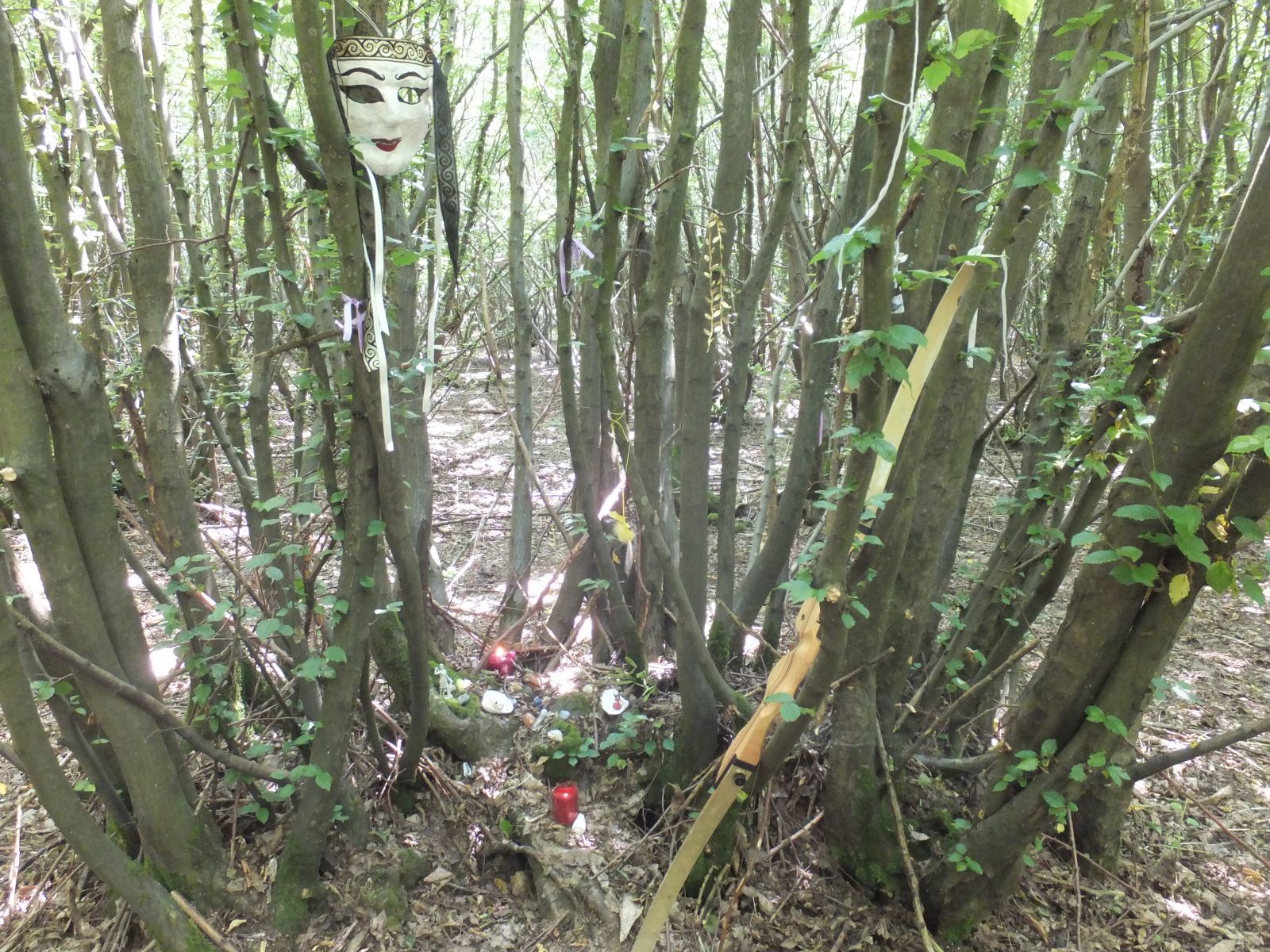Practitioners' Voices in Classical Reception Studies
ISSN 1756-5049
You are here
- Home
- Past Issues
- Issue 8 (2017)
- Frances Eley
Frances Eley
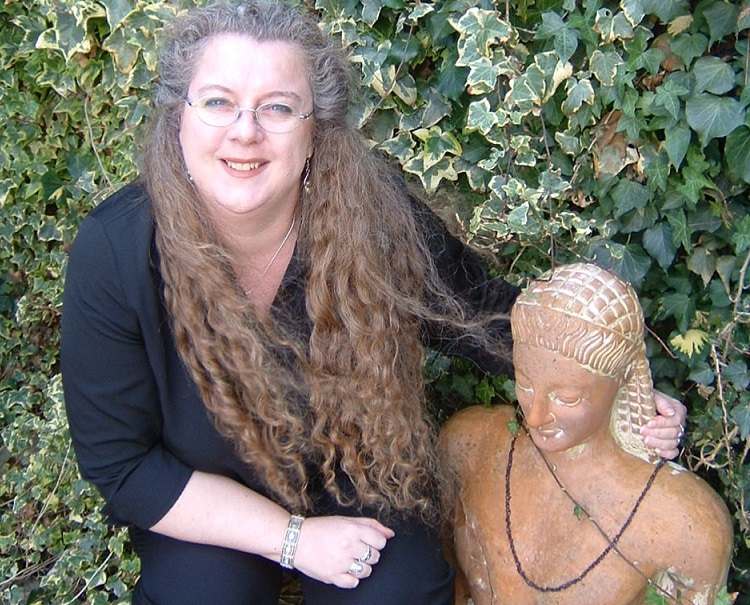
Frances Eley is an Associate Lecturer in Classical Studies and Archaeology for the Open University, and has a particular interest in ancient religion. As well as researching the modern reception and reconstruction of Greek and Roman religious ritual she is also a regular guest speaker for the Fintry Trust (an educational charity for the promotion of ideal philosophy and religion), with her 2018 programme including sessions on Celtic Mythology and Ancient Mystery Traditions. She is a scheduled guest speaker at the 2018 International Goddess Conference.
This discussion with Emma Bridges developed from a presentation, entitled ‘Thoroughly Modern Maiden: Artemis Myth and Ritual in Twenty-First Century Kent’, which Frances gave at the colloquium ‘Remaking ancient Greek and Roman myths in the twenty-first century’ held at the Open University’s London centre on 7th July 2016.
EB. Thank you for sharing your experiences with us, Frances. Could you begin by telling us how you’ve been using practice-based reconstructions as a way of learning more about ancient religion?
FE. I’ve been involved with a group of women, from all walks of life, who are engaging with ancient myth and ritual focused on Artemis and reconstructing elements of it to create rituals which are meaningful for modern women’s lives. I’m particularly interested in the processes involved in such ‘reconstructions’ and innovations, and what they can tell us about the way non-native cults and traditions are received, revived or manipulated to produce an entirely fresh and vibrant interpretation, relevant (in this case) for the purposes of modern women. In undertaking this study ‘from the inside’, I have a foot in both the academic world of ‘experimental archaeology’ so to speak, as well as the mystic world of one creatively engaged in Hellenic reconstructionism, which is, in my opinion, necessary in order to communicate effectively and authentically about religious experience. This study can help us to understand or shed light on the translation of foreign cults across cultures in antiquity, including considerations relating to aspects of adaptation, so long as we bear an important caveat in mind. Our ‘revival’ is exactly that, breathing life into practices that have apparently ‘vanished’ from the world over one and a half millennia ago, rather than adopting and adapting living cults. That said, one can make a claim that many of the universal and traditional aspects of ancient rituals – such as bearing light, processing, music, prayer, acts of purification and such like – have been preserved in all faiths until the modern age. These mark rites of passage like birth, coming of age, marriage and death; but it is the specifics of cults (ancient or otherwise) that are the malleable elements, and this is what enables an endless variety of innovation at a local level. Innovations may arise from factor like a change in the receiving culture or climate, the availability of resources, or the backgrounds and experiences of the worshippers and their present needs, spiritual or otherwise.
EB. Who are the people who comprise the group, and how did you become involved?
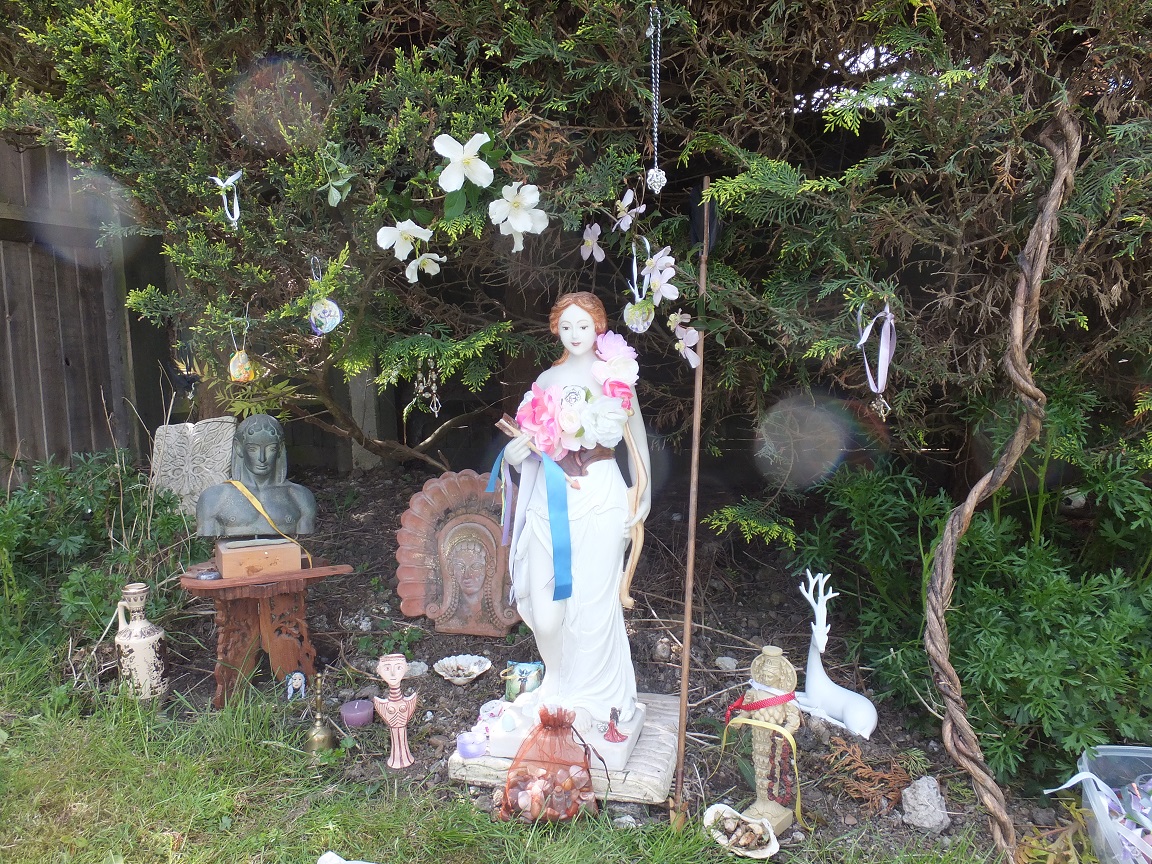
FE. About ten years ago, a friend and I set up a women’s group in East Kent, chiefly with the aim of exploring the ‘Divine Feminine’. This is understood as the balancing counterpart of what is referred to as the Divine Masculine (the Idea), and relates to the creative, nurturing and manifesting principle reflected in many Goddess archetypes of antiquity (these are now largely lost and unavailable to women in the modern west). Six years ago the group produced a Sacred Drama, based on the second Homeric Hymn to Demeter, as an Eleusinian Mystery play, and this had profound effects on the participants and viewers; it spoke both to mothers whose daughters had left home, and to those grieving a loss, not to mention revealing the mystery of the repeated cycle of birth and death. The group itself consists of postgraduates, healers, teachers, physicians, writers and artists and is made up of women with very different life experiences: single, married and unmarried mothers and grandmothers of all classes and religious backgrounds, chiefly Catholic Christian, but also Hindu and Wiccan. Following this encounter with ancient Greek myth and experience, the group focused on Artemis the following Imbolc – the Celtic festival particularly aligned with the Maiden on the wheel of the year – in February 2015, and many felt very inspired to follow up that experience (involving song, dance, oracling and mystic embodiment) and to attempt to work specifically with this ancient archetype in a splinter group.
EB. Why do you think Artemis appealed so much?
FE. Artemis has a certain attraction for modern women, who in many ways embody and express her archetypal features. When the women were initially asked to sum up how they thought of this goddess, they said words like: ‘freedom’; ‘independence’; ‘she knows what she wants’; ‘she doesn’t need anyone’; ‘focused’; ‘self-reliant’; and ‘adventurous’. These aspects were foregrounded over the many other domains of this goddess that the women were yet to explore, but also tapped into the modern woman’s sense of self-determination. One only has to look at the emergence in pop culture of strong, independent women like Katniss Everdeen (The Hunger Games) and Rey (Star Wars), not to mention the magnificent Amazonian Wonder Woman, to see how appealing it is for women to have their inner strength both recognised and celebrated.
Artemis is a particularly accessible, multi-faceted deity, and this enabled individuals to find ‘ways in’ to her according to their own needs – from her Maiden (Parthenos)/Mother of Life (Ephesia)/Crone (Hekate) aspects to domains including that of childbirth and other key transitions for girls and women. The fact that there is no one canonical version of Artemis from antiquity also helped. Artemis was mutable in terms of time and place and syncretised with plenty of other local deities of her type, including the Thracian Bendis and Cretan Britomartis/Diktynna and Potnia Theron types, as well as the lunar domain of Selene and the saviour/light bearer aspects of Hekate.
EB. What aspects of ancient religious practice were you keen to focus on?
FE. Well, a particularly attractive feature of such ancient cult practice for the women was the lack of doctrine or dogma that is attached to patriarchal ‘top-down’ religion, of being told what to believe, how to believe it and what to do, where women are given minimal, if any, roles in active priesthoods and no spiritual voice to minister to others. Instead the group were happy with the notion of ‘bottom up’ religion – which is co-created by women within the framework of what is known about Artemisian ritual, practice, festivals and such like – adapted to suit modern needs. We accepted and integrated the universal elements, while omitting certain practices like thousia, although sacrifice can just as well be made via food or plant offerings, as it is in Hinduism. It’s worth pointing out that no-one was being made to give up any other spiritual practice or ‘believe’ anything in particular, but that this work was being undertaken in the spirit of complementary practice, which connected the practitioner to the divine feminine through one of her most prominent and accessible archetypes.
EB. Can you talk us through how you go about (re-)creating an ancient rite?
FE. Re-creating an ancient religion is neither possible nor valid for modern women, but traditional elements of ritual and festivals attributed to Artemis can be revived to a certain extent, shaped around the communal experiences, backgrounds, creative potential and needs of the group. We understand ritual to be a set of actions that create a symbolic language through which one can access mystic union or create a relationship with the divine. All rites include the chernips or purification rite, which the pre-pubescent girls perform for the adults, as they may have done in Greece, as well as dance, music, song, procession, prayer and the use of flame to indicate the presence of the deity. Images, incense and other paraphernalia are used. Hindus and Catholics in the group particularly felt at home with this. Part of a Homeric Hymn to Artemis is recited in Greek as a general invocation, and elements such as circumambulation, oracling and embodiment take place on special occasions. Rites generally take place on a pre-agreed ritual lunar calendar, including such festivals as the Arkteia, Mounikhia, Thargelia and Kharisteria. The moon phases are followed and observances made on Full moons and Dark moons, with special activities for individual practice. The 6th day of every lunar month is also held sacred to Artemis. An alsos or Sacred Grove was located in a hazel ring in a forest, where most of the rites take place.
We research the ancient festivals of Artemis, or the character of her worship using ancient sources as far as possible (Homeric Hymns, Pausanias, Strabo and Callimachus and works of playwrights and poets), with important detail supplied by secondary scholarship in books such as ‘Girls and Women in classical Greek religion’ by Matthew Dillon, Connelly’s ‘Portrait of a Priestess’ and Parke’s ‘Festivals of the Athenians’ among many others. The well-researched modern guidebook created by Thista Minai, ‘Dancing in Moonlight’, has also provided very useful information and guidance on modern ritual creation for Artemis.
We consider the character, or focus, of the festival in question, and how that might relate to a modern context and needs. For example, the ‘Thargelia’ festival involves an element of purification involving a pharmakos. The element of ritual cleansing becomes important to the central celebration and on one occasion our ‘pharmakoi’ were made from bundles of sticks to which were attached images and/or words or objects relating to that which we needed to cleanse from our lives individually, and as a group. The celebrants witnessed the physical ‘thrashing’ of these ‘pharmakoi’ by each individual until there was satisfactory obliteration. The very physical (and often noisy, with associated screams, cries and grunts of exertion) act of ‘beating out’ an unwanted element in one’s life left people with a sense of euphoria and lightness which seemed astonishing – perhaps more efficacious than any verbal affirmation. The heaviness of the unwanted vibration was seemingly expunged from the body. We experience Artemis as a very physical deity, so some other of our ‘modern innovations’ in ritual involve a physical element.
EB. How do you decide upon and integrate other religious practices into your worship?
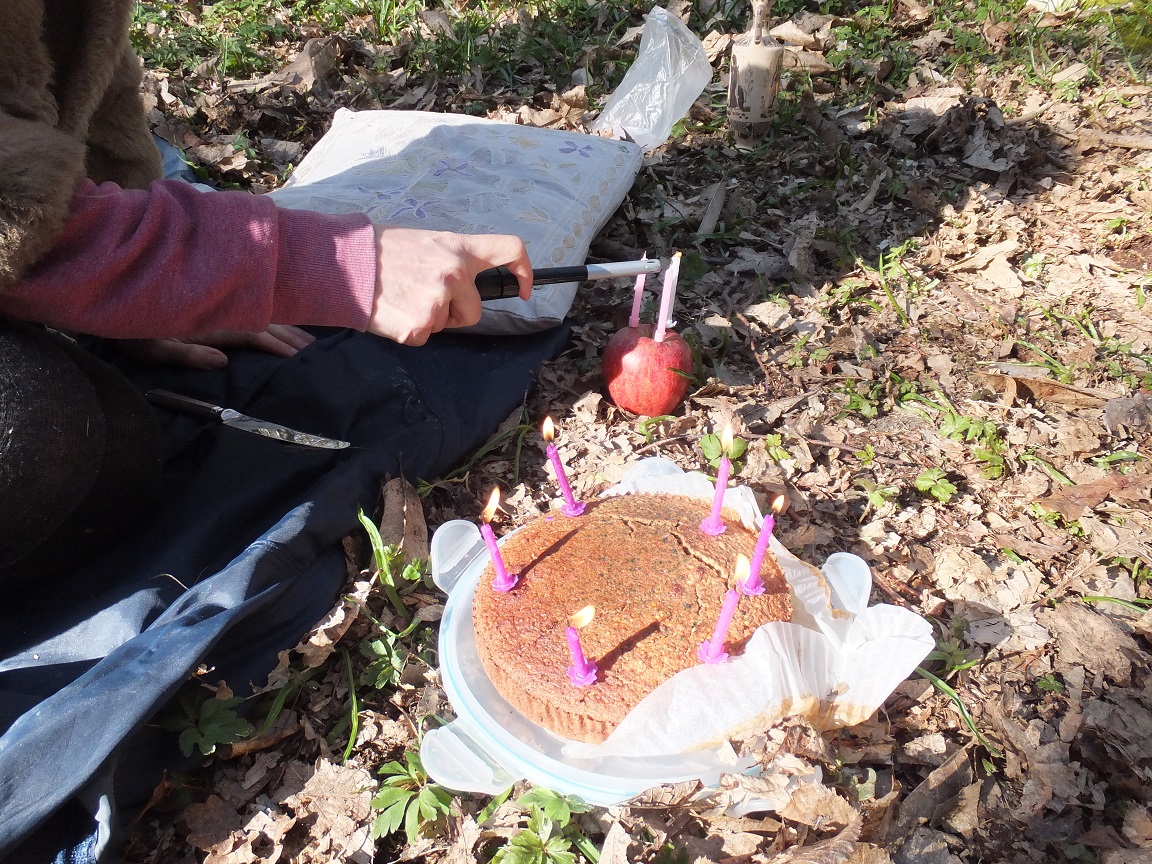
FE. One of the ways in which Artemis was approached in antiquity was via her many epithets, which also enabled understanding of the various ‘domains’ of the goddess. We use the epithets of Artemis extensively to help us to approach a specific aspect of the Lady at specific times of the year. In order to do this, the epithets of Artemis are mapped onto the Celtic wheel of the year as used by the Goddess movement in Glastonbury, and these aspects of Artemis are specifically invoked at those times; for example at Summer Solstice and the late summer months, her childbirthing aspects are highlighted, such as Artemis Lokkia and Kourotrophos, as well as Artemis as queen, Basileis. At Imbolc (February), time of the Maiden, she is Parthenos and Brauronia and at Samhain (Late October) she is Soteira, Enodia and Propylaii – her Hekate aspects. Although this is, in a sense, an artificial construct, since the Celtic wheel and its natural cycle is not similar to the planting and harvest times of ancient Greece, we have to consider the fact that we are not in ancient Greece, and neither is it felt that Artemis (or indeed, the individual soul of a worshipper) is bound by time and place.
Often, prior to rites, members select one of Artemis’ epithets from a pouch, which represents themselves and their particular ‘energy’ for that session – also, in a mystical sense, it represents the worshipper ‘manifesting’ that particular aspect of Artemis for the duration of the rite. In this sense, ‘Eilythia’ becomes the supporter or helper, ‘Phoebe’ bears the light, ‘Kokkoka’ casts the ritual seeds (barley) in an act of purification around the circle. The epithets of Artemis have also been used to create an oracle, which is consulted at every ritual. Every member of the alsos also has a personal version of this oracle at home, which they use in their daily individual devotions, or as and when desired. Physically, the epithets are also used in the creation of a kinetic mantra – a kind of haka (ceremonial dance involving chanting) – whereby each epithet is given a movement or pose, and then strung together in a sequence, usually of five, which the group perform together, in a line, in a rolling chant, at least three times over, sometimes also in English. This particular moving mantra has proved very popular, also with the children, and was successfully used by one of the women before a job interview to dispel nerves and encourage confidence! One woman, who has a Hindu background, raised the idea that the names of god/dess are non-different from their essence, and therefore the chanting of the names brings you into their presence. This is an effective hybridisation of paths which has produced astonishing rewards and results. I continue to hear stories from group members of how they have used the names of Artemis in ritual chant and movement for particular purposes; the most recent being a woman giving birth to her first daughter, standing in her front room, chanting and moving her way through the contractions, calling on the Lokhia and Eilythia aspects of Artemis, as the Lady who eases childbirth, throughout a swift, drug-free labour.
EB. How are you planning to build on this work in the future?
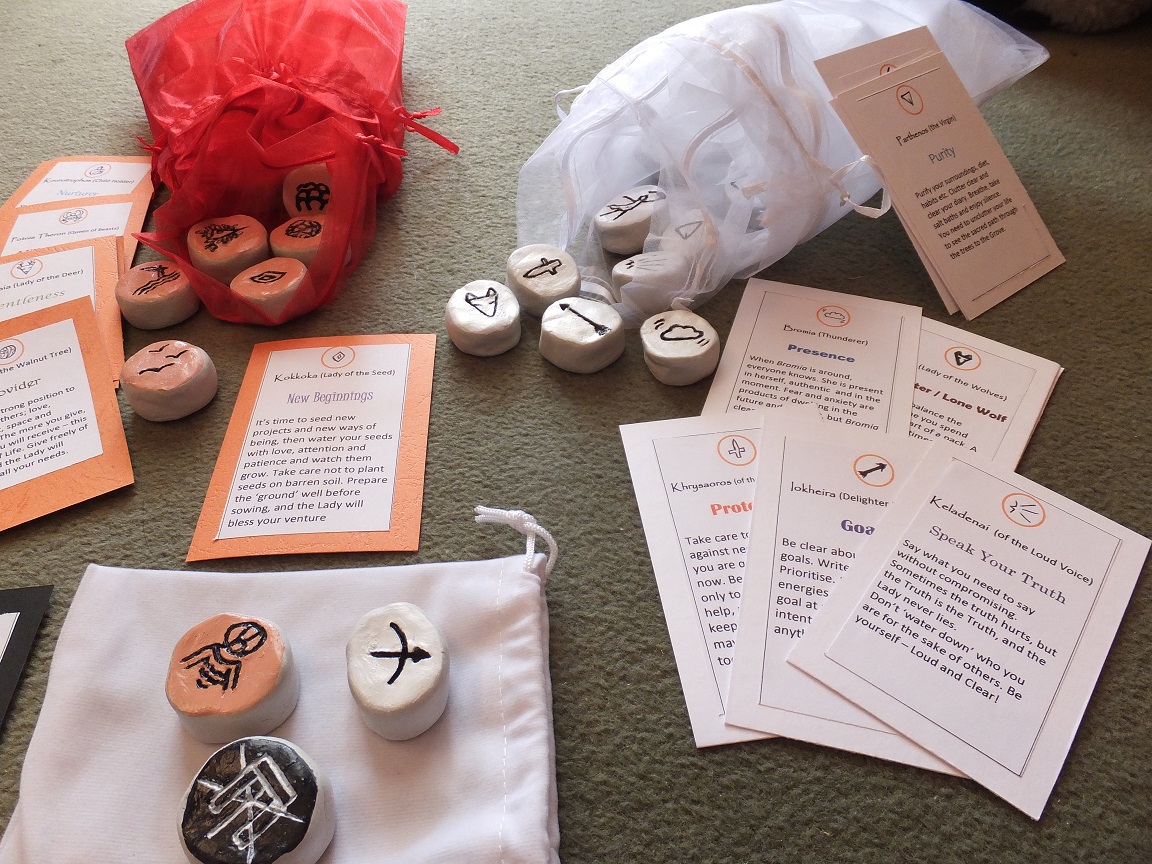
FE. One of our current projects involves adapting the Artemisian myths into Sacred Drama. At the moment, we’re collaborating on the myth of Aktaeon, which involves listening to and viewing images of different versions of the story, then reflecting on possible symbolism together, before considering potential innovations, then handing over to a writer. We have a skilled writer who put together the Eleusinian drama, who is now working on Aktaeon. In simplistic terms, our version is that the Prince hears that Artemis hunts in nearby woods and is drawn to explore and catch a glimpse of her. He ventures there on several occasions, with his five dogs (the senses), but she is elusive, and his dogs are always diverted, chasing off in different directions after lesser prey. One night, he leaves his dogs behind and Artemis allows him to catch a glimpse of her bathing. He is transfixed by her luminous grace, but Artemis challenges him and turns him into a stag before disappearing. Terrified, he hears the sound of his dogs hunting him and flees deeper and deeper into the forest to attain the shelter of Artemis. He finds her in a glade and she protects him from the dogs, slaying them with her arrows. Aktaeon is given the blessing that he can remain in his new form, ever at the side of Artemis, as her companion. When you think of Aktaeon as the soul, the simple allegory makes perfect sense.
The group has also set up an in-house Akademia, with the aim of improving knowledge about Artemis, her ancient temples and rites, as well as learning ancient Greek and producing rites, artwork, music, song and dance for the alsos. Each of the subjects are under the guidance of the group member with the most expertise in that field.
EB. What are the challenges of carrying out this kind of practice?
FE. Several challenges face the group, most importantly that of the ‘artificial community’. This is not a group of women all living in the same village or town, getting together regularly, these people are spread from the end of Kent to London and Chichester, and getting people together, especially modern day working women can be like herding cats! Modern technology has been helpful for communicating, but more often than not these days, the group is practising individually and sharing online, which is not ideal. Some members of the group have found the lack of scripture a challenge, and they occasionally long for a more regulative framework (as provided by organised religion) to take some of the pressure off the endless act of creativity required, which often falls on the shoulders of a few. British weather is also not conducive to outdoor activity! Core group members have moved away, and a new community is being established in Devon.
EB. Finally, how do you think involvement in these practices has impacted on the lives of the women who participate?
FE. Matthew Dillon, in his book Girls and Women in Classical Greek Religion, cited Plato’s complaint in the Laws about how women ‘exercise too much freedom of expression in divine matters’, setting up altars and shrines willy nilly and performing their own rites. Even in antiquity, a practical and pragmatic approach was taken towards building a relationship with the divine. Others say that nothing intrinsically has any meaning except that which we give it, but even in this bleak paradigm, such practices as undertaken by this women’s group have enabled the practitioners to cope with the trials of everyday life, process physical transitions – such as menopause – and move into a deepening mystic relationship with both themselves and this transformative aspect of the divine feminine. For one of the women who has worked with Artemis these few years, she feels that she has learnt that it ‘means it’s OK for me to be a woman’. Such a valuable unfolding in itself means the undertaking has been precious and worthwhile, and will continue for as long as is needed in this form.
